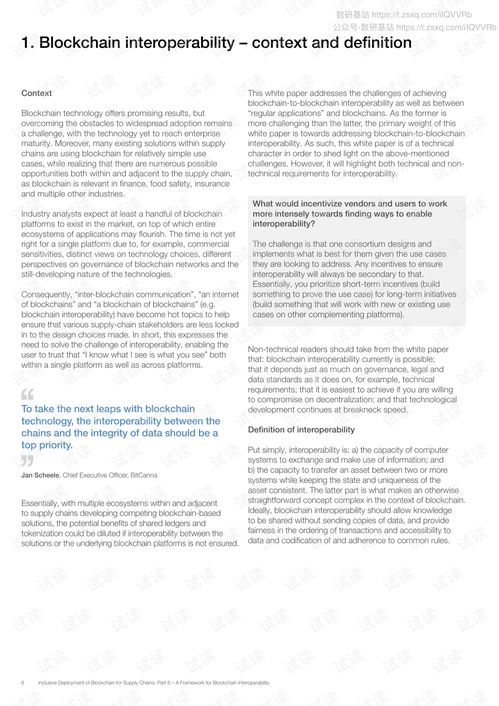Title: Exploring Blockchain: Answers to Common Questions
1. What is Blockchain?
Blockchain is a decentralized, distributed ledger technology that records transactions across multiple computers in a secure and transparent manner. Each block in the chain contains a list of transactions, and each block is linked to the previous one, forming a chain. This structure ensures the immutability and security of the recorded data.
2. How does Blockchain work?
When a transaction occurs, it is grouped with other transactions into a block. Before being added to the blockchain, the block must undergo verification by network participants known as miners. Miners compete to solve complex mathematical puzzles, and the first one to solve it adds the block to the chain. This process, known as consensus, ensures that all participants agree on the validity of transactions.
3. What are the key features of Blockchain?
Decentralization: No single entity controls the blockchain network, making it resistant to censorship and tampering.
Transparency: All transactions are recorded on a public ledger, visible to all network participants.
Immutability: Once a transaction is added to the blockchain, it cannot be altered or deleted.
Security: The cryptographic techniques used in blockchain ensure the integrity and security of transactions.

Smart Contracts: Selfexecuting contracts that automatically enforce terms and conditions when predefined conditions are met.
4. What are the different types of Blockchains?
Public Blockchain: Anyone can participate, view, and validate transactions (e.g., Bitcoin, Ethereum).
Private Blockchain: Access is restricted to authorized participants, offering more control and privacy (e.g., Hyperledger Fabric).
Consortium Blockchain: Controlled by a group of organizations, providing a balance between decentralization and control (e.g., R3 Corda).
5. What are the applications of Blockchain?
Cryptocurrencies: Digital currencies like Bitcoin and Ethereum enable secure and decentralized peertopeer transactions.
Supply Chain Management: Blockchain can track the provenance and movement of goods, enhancing transparency and traceability.
Financial Services: Blockchain facilitates faster and more costeffective crossborder payments and remittances.
Healthcare: It can securely store and share patient records, ensuring data integrity and privacy.
Voting Systems: Blockchainbased voting systems offer transparent and tamperresistant voting processes.
6. What are the challenges facing Blockchain adoption?
Scalability: As blockchain networks grow, they face challenges in processing a large number of transactions quickly.
Interoperability: Different blockchain platforms often struggle to communicate and share data with each other.
Regulation: Regulatory uncertainty and compliance issues pose challenges to widespread blockchain adoption.
Energy Consumption: ProofofWork consensus mechanisms used in some blockchains require substantial energy consumption, raising environmental concerns.
Privacy Concerns: While blockchain offers transparency, it also raises privacy concerns as transactions are publicly recorded.
7. How can businesses leverage Blockchain technology?
Streamlining Operations: Blockchain can automate and streamline processes, reducing costs and improving efficiency.
Enhancing Trust: By providing transparent and tamperproof records, blockchain builds trust among stakeholders.
Creating New Revenue Streams: Businesses can explore new business models and revenue streams enabled by blockchain technology.
Improving Security: Blockchain's cryptographic techniques can enhance data security and protect against fraud and cyber attacks.
Facilitating Partnerships: Blockchain enables secure and efficient collaboration among multiple parties, facilitating partnerships and consortiums.
In conclusion, blockchain technology offers a wide range of opportunities across various industries, from finance to healthcare to supply chain management. While challenges remain, the potential benefits of blockchain adoption are significant, and businesses are increasingly exploring ways to leverage this transformative technology.











